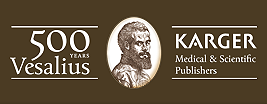
eet the man who played an important role in both the flourishing printing industry of Europe and the grand achievement of Vesalius’ De humani corporis fabrica.
By Dr. Ueli Dill, Curator of Rare Books and Manuscripts at the University Library of Basel
Johannes Oporinus, one of the most important printers of the 16th century, lived from 1507 to 1568 and made a considerable contribution to this flourishing period of printing in Basel.
Equipped with an excellent humanistic education, he remained a scholar throughout his lifetime and concentrated on publishing good books rather than simply being a businessman aiming for high profits. Accordingly, he left behind a mountain of debts after his death.
He was introduced to the world of medicine by the physician Paracelsus, who was as brilliant as he was controversial. During Paracelsus’ short time in Basel, Oporinus, then aged 20, was his assistant. The two men had a lot in common, but at the same time they differed fundamentally in certain points. On the one hand, both were committed to their profession with full vigor and great success, Paracelsus as a physician, Oporinus as a printer. Both tended to be skeptical of authority. Paracelsus fought the ancient authorities, Galen and Hippocrates, as well as the Pope. In Basel, he managed to be at odds with the local authorities almost immediately, forcing him to leave the city in the same year that he arrived. Oporinus, too, had problems with various boards of authority, e.g. the governing body of the University or the censorship authorities. On the other hand, Paracelsus’ inclination to drink large quantities of alcohol and his lack of good manners were not at all to Oporinus’ taste. The style of writing was of minor importance to Paracelsus’ rambling genius – unlike the majority of his peers, he hardly knew Latin, by the way – whereas Oporinus was a meticulous philologist, to whom the elegant and above all the correct form of writing meant everything: a crucial qualification for an editor and publisher of scientific and scholarly literature.
After that, Oporinus first worked as a teacher and professor of Latin and Greek. At the time, the University paid rather meager salaries to professors of such subjects, so Oporinus had to find other sources of income as well. He worked as a corrector in printing shops, where he realized that a printer could make more money than an academic, judging from the opulent dresses of the printers’ wives. So, during 1535–1538 he formed a printers’ association with three colleagues, among them Robert Winter, even though he was deterred by the high cost of the investment for several years.
Yet in 1542, he did manage to establish his own printing shop. We don’t know exactly where or how big it was – maybe it was in the ‘Schönes Haus,’ which he later bought in 1545. As mentioned, he was not a rich man. His printing shop, however, grew fast to become one of the largest in Basel, with 6 presses and a workforce of about 30 people.
He started off his production with two books, both of which became milestones in their own right.
In 1542/1543, he published the first-ever printed edition of the Koran – in a Latin translation supplemented with a number of historical works, a kind of encyclopedia of Islam. His second significant publication was De Fabrica by Andreas Vesalius.
